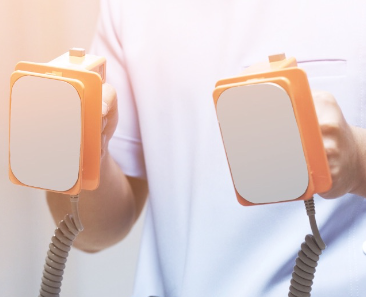Heart defibrillators, also known as automated external defibrillators (AEDs), are devices used to restart the heart in cases of sudden cardiac arrest. They work by delivering an electric shock to the heart, which can help to reset the heart’s rhythm and restore normal function.
When a person goes into sudden cardiac arrest, their heart may stop beating effectively and start to quiver or fibrillate. This type of arrhythmia can be life-threatening and requires immediate treatment. An AED can be used to deliver a shock to the heart that is strong enough to stop the fibrillation and allow the heart to start beating again in a normal rhythm.
The AED works by analyzing the heart’s rhythm and determining if a shock is needed. If a shock is required, the device delivers the shock through two electrode pads that are placed on the person’s chest. The shock travels through the electrode pads and into the heart, stopping the fibrillation and allowing the heart to start beating again in a normal rhythm.
It’s important to note that AEDs are designed for use by trained individuals and are not intended for use by people without proper training. The devices are designed to be easy to use and come with clear instructions for how to attach the electrode pads and deliver the shock. However, it’s still important to understand the basic principles of how AEDs work and to be trained in their use in order to provide effective treatment in an emergency situation.
Whether or not you should get a defibrillator for your workplace depends on several factors.
First, it’s important to consider the size and type of your workplace. If you have a large workplace with many employees, or if your workplace has a high-risk environment (such as a construction site or a factory), having a defibrillator on hand can provide peace of mind and could potentially save a life in the event of a sudden cardiac arrest.
Second, it’s important to consider the local laws and regulations regarding the use of defibrillators in the workplace. Some countries and states have laws that require businesses to have a defibrillator on hand, while others do not. You should familiarize yourself with the local laws and regulations and make sure that you are in compliance with them.
Finally, you should consider the cost of purchasing and maintaining a defibrillator. While these devices are relatively inexpensive, it’s important to budget for the cost of regular maintenance and replacement of the pads and batteries, as well as training employees on how to use the device.
In conclusion, having a defibrillator in the workplace can be a good investment, especially for larger businesses or those in high-risk environments. However, it’s important to consider the local laws and regulations, as well as the cost, before making a decision.


Leave a Reply